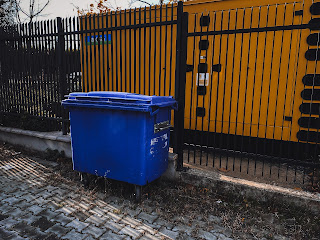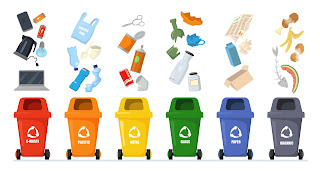7 Surprising Facts That You May Not Have Known About Recycling And Tips For Recycling Right.
The average American generates almost five pounds of waste per day, adding up to almost 300 million tons of waste produced nationally each year. Recycling plays a significant role in limiting the amount of this waste that gets sent to landfills and incinerators and recovers valuable materials for transformation into new products.
Recycling is a complex system controlled by global materials markets, local regulations, and consumer behavior. Consumers play a critical role in whether and how materials are recycled, but understanding how to properly recycle items in your city or town can be complicated.
Read on to learn 7 surprising facts that you may not have known about recycling and tips for recycling right.
- Recycling is the least preferred option of the 3 Rs. “Reduce, reuse, and recycle” is a phrase we learn at a young age, but when it comes to the 3 Rs, recycling is actually the least environmentally preferable option. While recycling generally uses much less energy and fewer resources than manufacturing products from virgin materials, preventing waste from being created to begin with through waste reduction, reuse, and refusing unnecessary consumption and packaging are the best options. Check out our top five reuse tips for combating climate change.
- Where you live determines what materials you can recycle curbside. The list of materials accepted in your curbside recycling bin depends on who picks up your waste (your town or hauler) and what technologies are used at the processing facility the materials are transported to. Check your town or city’s website for information on what materials are accepted in your curbside recycling program. If you live in an apartment building or condo and a private waste hauler collects your recycling, contact your building manager to learn what materials your hauler does and doesn’t accept. Other options such as drop off recycling or collection events for specific materials like electronics or household hazardous waste may be available through your town, and this information should also be available on your town or city’s website.
- Cities struggle with recycling contamination. When items that are not accepted in a recycling program are placed into recycling bins, they are considered “contaminants.” Recycling contamination can cause issues with the recycling process and cost cities money. When there is too much contamination in a load of recycling, the entire load can be at risk of being non-viable and being sent to a landfill or incinerator. Some of the most common mis-recycled items include “tanglers” like plastic bags, garden hoses, and holiday lights. These items are not accepted in curbside recycling programs and can get wrapped around recycling equipment, requiring the facility to shut down so staff can remove the items from the machinery. Other common recycling contaminants include clothing, ceramics, wood, and food-soiled or wet paper, cardboard, and containers. Be sure to empty your containers and rinse them of all possible contaminants such as food waste, oil, grease, and liquids and to follow your local recycling rules to prevent contamination.
- Global policies have impacted recycling markets, and many are now questioning recycling’s future as a viable management option for some materials (like certain plastics). China has been the world’s biggest importer of waste for decades. In 2018, to improve environmental conditions, China banned the import of many types of solid waste and set strict contamination limits on imports of recyclable materials through its “National Sword” policy. This significantly impacted global recycling markets, creating logjams in the international recycling system that have led to material piling up at recycling facilities or being sent to landfills or incinerators. These much stricter requirements for recycling contamination levels and their market impacts make it even more important to recycle right, prevent contamination, and choose reusables whenever possible.
- The numbers on plastics don’t necessarily mean they are recyclable. The small number with the chasing arrows on the bottom of a plastic container is the resin identification code, which tells you what type of plastic the item is. Even if an item has a recycling code, it may not necessarily be accepted in your curbside recycling program, depending on whether the recycling facility your materials go to is equipped to process that particular material. Rigid plastics are more likely to be recycled than thin plastic films, and items that are a mix of different materials are less likely to be recycled because they’re difficult to separate. Compostable bioplastics, which are made from plant-based materials, aren’t recyclable and can only be composted at a commercial composting facility. Visit your town or city’s website for information on what types of plastics are accepted for recycling curbside.
- Plastic utensils, tissues, napkins, and paper towels are not usually accepted for recycling. Plastic utensils like forks, spoons, and knives are typically too small to be recycled, and because they can be made from a variety of low-grade plastics, they’re difficult to identify by their plastic type. Tissues, napkins, and paper towels are not suitable for recycling because they’re made from a pulp that breaks down easily, and they often contain toxic additives like bleach. Clean tissues, napkins, and paper towels should be placed in the compost or trash instead of the recycling bin.
- Plastic packaging is especially problematic. Containers and packaging are ubiquitous in our daily lives, and they make up 21% of all waste sent to landfills. Much of this is plastic packaging made from types of plastic that may not be accepted for recycling in your town. To reduce packaging waste, you can purchase products with minimal or reusable packaging or with packaging made from glass or metal, highly recyclable materials that can be recycled infinitely.



Comments
Post a Comment